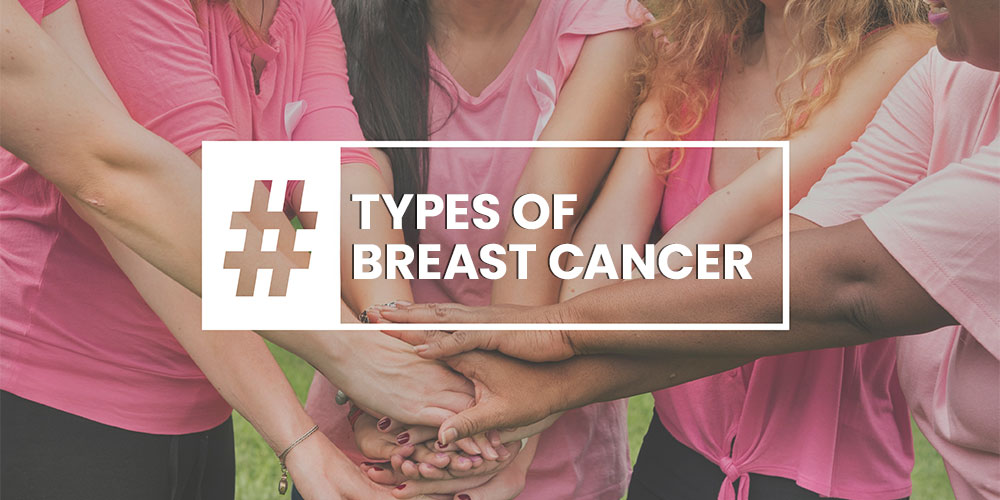
Introduction
Breast cancer is one of the most common cancers affecting individuals worldwide. It occurs when abnormal cells in the breast grow uncontrollably, forming tumors that can invade nearby tissues or spread to other parts of the body. Understanding breast cancer is vital because it is not a single disease but a group of diseases with various characteristics.
Knowing the different types of breast cancer and understanding the stages of breast cancer is important because both factors influence how the disease behaves and responds to treatment. Proper classification and staging help doctors develop personalized treatment plans, improving the chances of successful outcomes.
Furthermore, the classification of breast cancer plays a critical role in determining prognosis and guiding decisions about surgery, chemotherapy, radiation, hormone therapy, and targeted treatments. Early and accurate diagnosis of breast cancer leads to better treatment management and improved survival rates.
Main Types of Breast Cancer
A. Non-Invasive (In Situ) Breast Cancer
Non-invasive breast cancers are early-stage cancers where abnormal cells are found only within the ducts or lobules of the breast and have not spread to surrounding breast tissue. Because these cancers haven’t invaded beyond their original location, they generally have a better prognosis and more treatment options.
Ductal Carcinoma In Situ (DCIS)
Ductal carcinoma in situ is the most common form of non-invasive breast cancer. It occurs when abnormal cells develop inside the milk ducts but remain confined within the duct walls. Since the cells have not invaded nearby breast tissue, it is considered an early, highly treatable form of breast cancer.
Lobular Carcinoma In Situ (LCIS)
Lobular carcinoma in situ begins in the lobules, which are the milk-producing glands of the breast, while DCIS starts in the milk ducts. Unlike DCIS, which is considered a true non-invasive breast cancer confined to the ducts, LCIS is not typically classified as cancer but rather as an abnormal cell growth that signals a higher risk of developing invasive breast cancer in the future.
B. Invasive (Infiltrating) Breast Cancer
Invasive (Infiltrating) breast cancer occurs when cancer cells break out from the original ducts or lobules and spread into nearby breast tissue. Unlike non-invasive types, this form has the potential to spread to lymph nodes and other parts of the body. Early detection and prompt treatment are key to managing its progression effectively.
Invasive Ductal Carcinoma (IDC)
Invasive ductal carcinoma (IDC) is the most common type of breast cancer, accounting for about 70–80% of all cases. It begins in the milk ducts—the tubes that carry milk to the nipple—and then breaks through the duct wall to invade surrounding breast tissue.
Invasive Lobular Carcinoma (ILC)
Invasive lobular carcinoma (ILC) starts in the lobules—the glands responsible for producing milk—and spreads to nearby breast tissue. While IDC usually forms a solid lump, ILC tends to grow in a single-file pattern, making it harder to detect on physical exams or imaging. This subtle growth pattern often causes ILC to be diagnosed at a later stage.
Metastatic Breast Cancer
Metastatic breast cancer is breast cancer that has spread beyond the breast to other parts of the body, such as the bones, liver, lungs, or brain. It’s also known as stage 4 breast cancer. While it’s not considered curable, it is treatable, and many people live for years with the disease through advanced treatment options that help control its spread and manage symptoms.
C. Less Common Types of Breast Cancer
Less common types of breast cancer include forms like inflammatory breast cancer, Paget’s disease of the breast, and triple-negative breast cancer. These less common types of breast cancer are rare, behave differently, and often require specialized treatment approaches. Recognizing their unique characteristics is essential for accurate diagnosis and effective care.
Inflammatory Breast Cancer
Inflammatory breast cancer (IBC) is a rare but aggressive form of breast cancer that blocks lymph vessels in the skin of the breast. Unlike typical breast cancers, it may not form a lump. Instead, the breast often appears red, swollen, and warm, with skin that may look pitted—like an orange peel. IBC tends to progress quickly, so early diagnosis and immediate treatment are crucial.
Triple-Negative Breast Cancer (TNBC)
Triple-negative breast cancer (TNBC) is an aggressive type of breast cancer that lacks estrogen, progesterone, and HER2 receptors. Because it doesn’t respond to hormonal or targeted therapies, treatment options are more limited and often rely on chemotherapy. TNBC tends to grow and spread faster than other types. This makes early detection and timely treatment especially important.
HER2-Positive Breast Cancer
HER2-positive breast cancer is a type that tests positive for the human epidermal growth factor receptor 2 (HER2) protein, which encourages the growth of cancer cells. Around 1 in 5 breast cancers have extra copies of the gene responsible for producing this protein. As a result, HER2-positive breast cancers often grow and spread more aggressively than other types.
Mucinous Carcinoma
Mucinous carcinoma is a rare type of cancer where the tumor is made up of cancer cells mixed with mucin — a jelly-like substance that normally helps protect and support healthy cells. In this type of cancer, the mucin surrounds the cancer cells and becomes part of the tumor itself.
Although mucinous carcinoma can develop in different parts of the body, it’s most often found in the breast. When it occurs in the breast, it’s also called colloid carcinoma. It can also form in places like the lungs, colon, or rectum.
Fungating Breast Cancer
Fungating breast tumor can develop in various cancers, including breast cancer and melanoma. Approximately 2% to 5% of locally advanced breast cancers may lead to a fungating breast wound. This occurs when cancer cells invade the skin around the breast, leading to skin breakdown, ulcer formation, and potential infection.
Metaplastic Breast Cancer
Metaplastic breast cancer is a rare and aggressive type of secondary breast cancer that often appears as a fast-growing lump. While it can resemble invasive ductal carcinoma on scans, it’s usually larger at diagnosis. Under the microscope, the cancer cells look like a mix of different types, but current research suggests it starts from one type of early cell capable of changing into various forms.
Explore Breast Cancer Research Opportunities in Nebraska
Breast cancer clinical trials offer patients access to new treatments that may be more effective than standard care. These studies help researchers improve detection, treatment, and prevention strategies.
Metastatic breast cancer clinical trials focus on the advanced stages of the disease, aiming to slow progression, reduce symptoms, and improve quality of life through innovative therapies.
If you’re looking to participate in clinical research studies in Nebraska, there are opportunities that support breast cancer research while offering compensation for your time and involvement.
Conclusion:
Understanding the various types of breast cancer is essential for accurate diagnosis and treatment. Clinical trials play a vital role in developing better therapies. Participating in trials not only offers access to cutting-edge treatments but also helps shape the future of breast cancer care.







